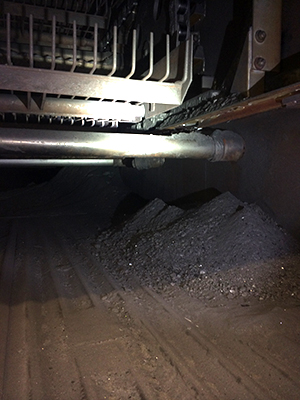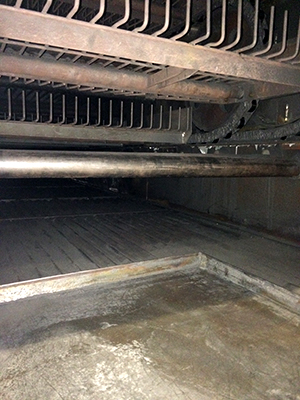Industrial Ovens

 Before Oven Cleaning
Before Oven Cleaning After Oven Cleaning
After Oven Cleaning
Ovens are commonly the big problem of an industrial setting. Whether it is used for baking food products, drying wet surfaces, or hardening coatings, the industrial oven faithfully puts in long hours and delivers finished products day and night. The constant progression of products through an oven takes its toll. Crumbs fall from baked products, lubricants from the conveyor belt may build up and fall to the floor, and fumes from drying products leave residue on the walls and moving parts.
These various debris can become a fire hazard or may begin to fall into and contaminate the products. When this happens, the oven needs to be cleaned. Some companies try to do the cleaning themselves but most hire professional cleaning firms that specialize in heavy-duty industrial cleaning.
The first step in oven cleaning is to turn the oven off so it can cool enough to permit the confined space technicians inside. This cooling period may take 8 to 12 hours or even more. When scheduling a cleaning, this has to be calculated into your down time. If the oven is longer than 30 meters (or 100 feet), fans should be placed at the ends to assist in the air flow through the oven so technicians can breathe freely. A failure to do this could create a lack of oxygen for personnel inside. A second step, if needed, is the removal of interior parts such as grates or chain links or compartments, if this is possible. This is normally done by the factory’s maintenance workers since they are most familiar with the oven. This is only done if the parts are removable and they prevent the workers from fully accessing and cleaning the oven.
The actual cleaning process depends on the type of residue inside the oven. Water is normally not used or is used sparingly to avoid damaging the interior. Some ovens have chain conveyor systems that use graphite lubricant. Over time graphite powder can build up beneath the conveyor and begin to contaminate products. The cleaning process involves men crawling beneath the conveyor and scooping the graphite into buckets for removal.
If residue buildup is light and flaky, it may come off rather easily with wire brushes, scrapers, and vacuums. If the contaminant is hard, a more aggressive approach, such as grinders or small air-powered chipping hammers known as “air chippers.” For some applications, if wiping is done, lint-free rags may be necessary so no fibers remain to contaminate products. Ovens commonly have exhausts ducts that take smoke or fumes outside and these should be considered during the cleaning process. These ducts are often coated with grease or other residue that can be a fire hazard. In extreme cases, debris may partially clog the duct and restrict vital air flow, resulting in a poor baking process or contaminated product (due to lack of airflow or fume evacuation).
Duct cleaning is commonly accomplished through the use of scrapers and air chippers. In some instances ducts can be disconnected and power washed. Oven cleaning is a critical part of any factory maintenance program and is often done on a regular basis, such as every 6 to 12 months.